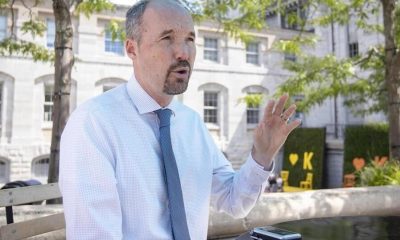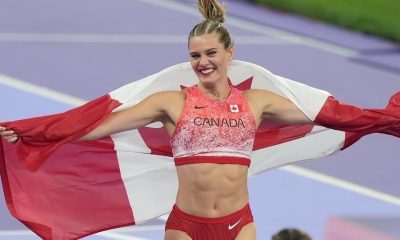Politics
IPCC: Our climate change future will be determined by politics – Quartz
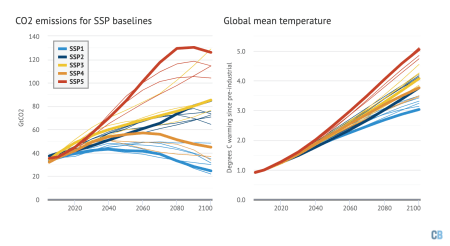
In the doomsday scenario of the world’s climate modelers, every leader acts a bit like Donald Trump. Resurgent nationalism breeds regional conflicts and competitiveness. Security concerns prompt countries to retreat inward. Global development slows and inequality festers, while cooperation on energy and food security goals withers. Major countries such as the US abdicate leadership on climate action as emissions rise, and temperatures soar to searing levels.
Technically, it’s known as the Shared Socioeconomic Pathway 3 (SSP3), just one of many models published by scientists in 2016 to game out different futures, and included for the first time in reports developed for the Intergovernmental Panel on Climate Change (IPCC). But in casual conversation, many climate scientists simply call it “Trump World.”
“The biggest climate impact is not in the highest warming world,” says Zeke Hausfather, a climate scientist at the environmental research group Breakthrough Institute (he was not involved in designing the models). “The highest-impact scenario is SSP3, Trump World, because so much of world remains poorer.” A breakdown in international cooperation means emissions slow, but so do economies. Human suffering rises as societies are deprived of resources to adapt to rising temperatures.
As the world’s leaders gather later this year in Glasgow, Scotland to announce their climate pledges under the Paris Agreement, this will be just one of the many potential worlds facing them.
What’s different about the sixth IPCC assessment report
On Aug. 9, the IPCC released its sixth assessment report, a series of scientific reports to assess the scientific, technical, and socioeconomic dimensions of climate change.
Every five years or so, hundreds of scientists get together to present the best available science that conveys their understanding of what is happening to the climate, and what we can do about it. Their work is summarized in an IPCC assessment report, the sixth of which was released on Aug. 9.
SSP3—Trump World—is one of five socioeconomic scenarios in the latest report (AR6), assessing the scientific, technical, and socioeconomic dimensions of climate change. The scenarios play a critical role for world leaders who must decide what to do about the planet’s rising temperature.
For years, scientists had relied primarily on geophysical climate models to forecast what will happen as the Earth warms. Their models focused on physics: ocean currents, vegetation, atmospheric concentrations of methane and other greenhouse gases (GHG), along with hundreds of other factors. One of the original versions, built on a 1960s-era supercomputer, was built at the Lawrence Livermore National Laboratory (the first animation is below).
All of this data are fed into massive supercomputers that simulate how the climate system—the interaction between land, oceans, and atmosphere—behaves after we dump billions of tons of GHG into it.
What was missing from these climate models, however, was the biggest variable of all: our decisions about what kind of world we’re building.
Politics can profoundly affect how these models play out, since they largely dictate how much carbon dioxide and methane we pump into the atmosphere. Socioeconomic factors from childhood education to trade policies become an ever more important part of the climate equation over time.
Scientists made previous attempts to account for these influences. In the 1990s, the “SRES” scenarios considered factors like population and economic growth in climate projections. But the “Representative Concentration Pathways” (RCPs) adopted as the basis for later the IPCC’s Fifth Assessment Report in 2014 excluded those factors entirely.
In parallel, researchers began developing five “Shared Socioeconomic Pathways” to see how the world might evolve. By combining these with the RCP climate-only models, the broader scenarios could tell us just how the world might evolve under different political circumstances, and how hard it will be to achieve emission reductions under them. Scientists could then better understand the interplay between the climate system and humanity’s future development.
Those researchers began publishing their initial findings in 2016, after the publication of the IPCC’s Fifth Assessment Report, so their work was pushed into this latest report. While scientists have been running and refining these models for years, they’re now part of the official narrative around our climate future.
From The Green Road to The Highway
Years of supercomputer time have now been devoted to giving us the ability to test very different assumptions about population, technology, economics, and politics that lead to very different worlds. Five baseline worlds laid out by the Shared Socioeconomic Pathway reveal “alternative pathways for future society,” says Hausfather.”We were missing some of the arrows in our quiver the last time around.”
This time the Shared Socioeconomic Pathway models illustrate, in a future without climate policy, just how different those worlds can be. The scenarios, as summarized from the scientific literature, cover five baselines offering alternative pathways for humanity.
| Scenario | Description |
|---|---|
| SSP1: “Taking the Green Road:” Sustainability (low mitigation and adaption challenges) | The world shifts gradually, pervasively, toward a more sustainable path. Economic growth emphasizes human well-being, wise environmental stewardship, falling inequality, and lower resource and energy intensity. |
| SSP2: “Middle of the Road:” Historical patterns | Social, economic, and technological trends persist. Development, income growth and sustainable development proceeds unevenly. Slow progress, moderate global population growth. Societal and environmental changes remain. |
| SSP3: “A Rocky Road:” Regional Rivalry / highly challenging | Nationalism surges. Policies shift toward security at the expense of development and environmental protection amid rising regional conflicts and a decline in international cooperation. Economic and environmental degradation worsens over time. |
| SSP4: “A Road Divided:” Inequality | Countries (and societies) stratify between rich nations dominating knowledge sectors of the global economy, and poorer nations in labor-intensive, low-tech sectors. Social cohesion degrades. Social conflict intensifies. Technology is not shared equally. Environmental policies primarily serve middle and high-income areas. |
| SSP5 “Taking the Highway:” Fossil-fueled development | Full exploitation of fossil fuel resources produces wealth, rapid technological progress, and human capital development, but leads to much higher emissions. There is faith in the ability to effectively manage social and ecological systems, including by geo-engineering if necessary. |
The differences are stark. Under the green road (SSP1), emissions may peak as early as 2040—or not at all under SSP5, where temperatures soar well past the 2ºC increase that scientists say are likely to acidify oceans, intensify storms and coastal flooding, and fuel roasting heat waves and droughts. You can see how emissions and global mean temperature fare under different scenarios below with climate action.
A diverse range of “what if” scenarios
Of course, all of these outcomes are approximations at best. And some of the underlying assumptions are tenuous (SSP3 asserts that most world leaders simultaneously share nationalist governing philosophies) if not altogether implausible (for instance, the assumption that solar power will be more expensive in 2050 than today). But the scenarios aren’t meant to be precise mirrors of future reality. They’re designed to explore a diverse range of “what if” scenarios revealing just how hard it will be to tackle climate change under different conditions. Our future will be a fluid mix of these scenarios over time.
“These are very idealized pathways,” says climatologist Glen Peters, a senior researcher at the Center for International Climate Research in Norway. “In reality, we have a world that is amidst all these different approaches. Our world is a unique world.”
So while none of these scenarios describes our world perfectly, we seem to be moving between them regularly. The “Trump World” of SSP3 might have seemed plausible just a few years ago. But Trump has since lost re-election, Europe’s right-wing swing is stalled, and Brazil’s far-right president, Jair Bolsonaro, is battling for political survival.
Indeed, there are already signs that political momentum might shift behind more ambitious climate targets. “In climate change, there aren’t too many silver linings,” says Hausfather, “but we are finally starting to see commitments from countries that are mainly in line with what’s needed.”
Today, a concerted climate effort, or a breakthrough technology such as cheap energy storage, could change baseline scenarios in a matter of years.
A multiverse of potential realities
Policymakers now face a multiverse of possible worlds developed by climate modelers. And their decisions, in part, will decide which scenario plays out. The good news, says Peters, is that the chances for the worst-case scenario, a catastrophic world with a global mean temperature rise above 5ºC, now seem lower. But then so do the odds of a base-case 1.5ºC world where emissions peak and then drop to zero by around 2050.
In this week’s IPCC report, researchers say we’re now “very likely” to exceed 1.°C to 1.8°C of warming above pre-industrial levels by 2100, even in a very low GHG emissions scenario (SSP1-1.9). This suggests a “middle of the road” scenario best describes our emissions trajectory. “We’re not following a 1.5ºC or a 5ºC emissions trajectory,” says Peters. “We’re going somewhere in between.” Hausfather agrees. The most likely emissions scenario, he estimates, puts us on track for about 3ºC of warming by the end of the century, to an average temperature the Earth hasn’t experienced for more than 3 million years. That would severely test many countries’ ability to adapt, and for the impacts for some, such as islands nations, would be catastrophic.
And after that? We don’t know. The IPCC’s models only extend to about the end of the century. In the next IPCC report, researchers can be expected to start looking out toward 2150 and beyond, well within the lifetime for the children of someone born today. ”The world doesn’t end in 2100,” says Hausfather, “even though our models do.”
Politics
Some key issues to watch for in B.C.’s provincial election campaign
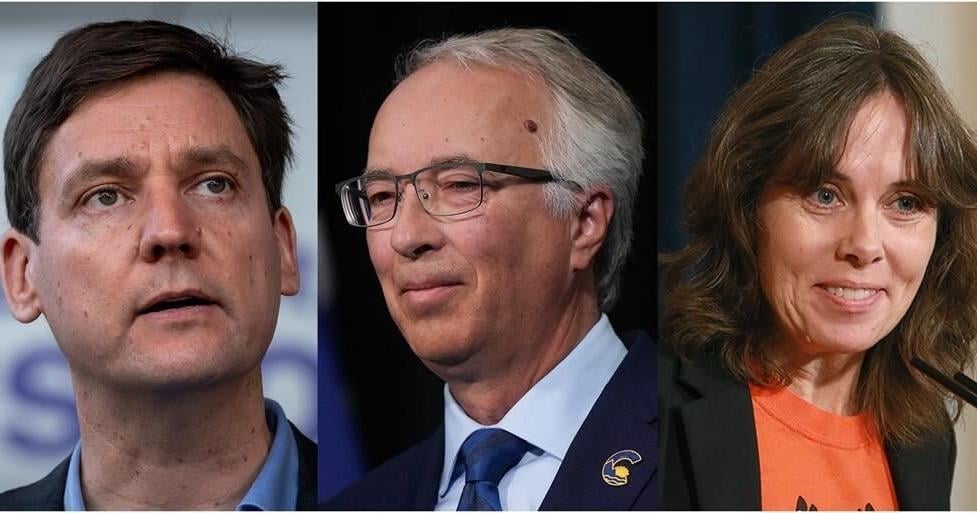
VANCOUVER – The British Columbia provincial election campaign is expected to officially kick off Saturday, but party leaders have been vying for votes for months in the lead up to the Oct. 19 fixed election day.
Here’s a look at some of the issues that are expected to be front and centre over the next month and what the political parties have said about them so far.
Health Care
B.C. Conservatives promise significant changes to the system, including sending people outside the province for care, expanding private clinics, and providing compensation for workers who lost their jobs for refusing to get the COVID-19 vaccine.
The NDP defends its management of the health file, pointing to a new contract with doctors, adding 250,000 nursing hours and 835 new family doctors. Leader David Eby says for the first time in more than 20 years, fewer British Columbians are looking for a family doctor than the year previous. In the days leading up to the election campaign, the government signed an agreement with Ottawa that would see the province get an estimated $195 million to cover diabetes medication and hormone therapy, if a new federal PharmaCare bill becomes law.
The Greens want to establish community health centres in each of B.C.’s ridings to replace the current network of urgent and primary care centres,
Crime
A series of high-profile crimes involving repeat offenders has pushed the issue of public safety into the spotlight, as residents and businesses look for answers to what they say is a rapidly deteriorating situation.
Researchers and police say statistics show most crimes are down in B.C., but that hasn’t quelled the voices calling for more to be done on bail reform, enforcement of regulations and other changes to the justice system.
B.C. Conservatives are promising to increase funding to police, applying “zero tolerance” for violent, repeat offenders and appointing judges that prioritize victims’ rights.
The NDP, meanwhile, says the province has among the lowest violent crime rates against children and seniors in Canada, and pledges to invest in what it calls solutions to root causes of criminal activity such as drug and mental health treatment, support programs, health care and housing.
The BC Greens have said they’ll fund a “continuum of response” to mental health, substance use, and other complex social issues, with a focus on prevention and community-led responses. The party also says it will draft a Community Safety and Policing Act and improve officer training to “shift police culture.”
Housing
The NDP government has attempted to lower the province’s sky-high housing costs and increase supply through a range of initiatives including putting limits on short-term rentals, launching a $500 million fund for non-profits to buy rental properties, and passing legislation requiring communities to allow multi-unit housing on lots previously zoned for single-family homes.
The B.C. Conservatives say they’ll get housing costs under control by promoting the development of new housing supply “while cracking down on illegal money laundering that has inflated prices and facilitated criminal activity.”
The Green housing plan includes $1.5 billion for a non-profit housing fund and the introduction of vacancy control to cap rent increases between tenancies.
Toxic drugs
The province’s drug toxicity crisis has killed more than 15,000 people since the B.C. government declared a public health emergency in 2016.
The NDP dialed back its drug decriminalization policy earlier this year, narrowing places where people can possess small amounts of illicit drugs for personal use. More recently, leader David Eby said a re-elected NDP would open facilities to treat people involuntarily if they have concurrent mental health and addiction issues.
It’s similar to a plan that was announced by B.C. Conservative Leader John Rustad days earlier. Rustad has promised involuntary care for “those at serious risk due to addiction, including youth and adults, to keep the most vulnerable safe” and says he’ll build secure treatment facilities.
Sonia Furstenau, leader of the BC Greens, says both men are walking “off every reactionary cliff” and that the province needs more investment in prevention and addressing the root causes of what’s happening in communities. She says people need secure housing, a basic constitutional right to safety, and access to health and mental health services and treatment.
Economy
British Columbia’s finance minister announced earlier this month that the deficit this fiscal year will be $1.1-billion higher than originally forecast, coming in at nearly $9 billion.
The news comes as one business leader said many British Columbians are experiencing their own “personal recession.”
Katrine Conroy defended her party’s budget as finance minister, saying it’s not the right time to balance the budget when the government needs to provide services and support those struggling over a lack of affordability.
John Rustad’s Conservatives are promising to cut “wasteful spending” and remove “useless and redundant regulations” to support small businesses.
Leaders
This is David Eby’s first election as premier and party leader. He was acclaimed as leader of the New Democrats in 2022, after the only other candidate in the race was disqualified.
John Rustad went from relative obscurity as an ousted BC United MLA to the Leader of the B.C. Conservatives. The party gained more notoriety after the BC United suspended its election campaign but Rustad is largely untested as a leader.
He faced criticism in the lead-up to the campaign for some of his party’s candidates, which include a suspended doctor who was removed after repeatedly saying COVID-19 vaccines were more dangerous than the illness, and a candidate who was replaced after sharing social media content about the “5G Genocide.”
BC Green Party Leader Sonia Furstenau was first elected as MLA in the Cowichan Valley in 2017, and has been the leader of the BC Greens since 2020.
This report by The Canadian Press was first published Sept. 20, 2024
Politics
A look back at nearly three decades of British Columbia provincial elections
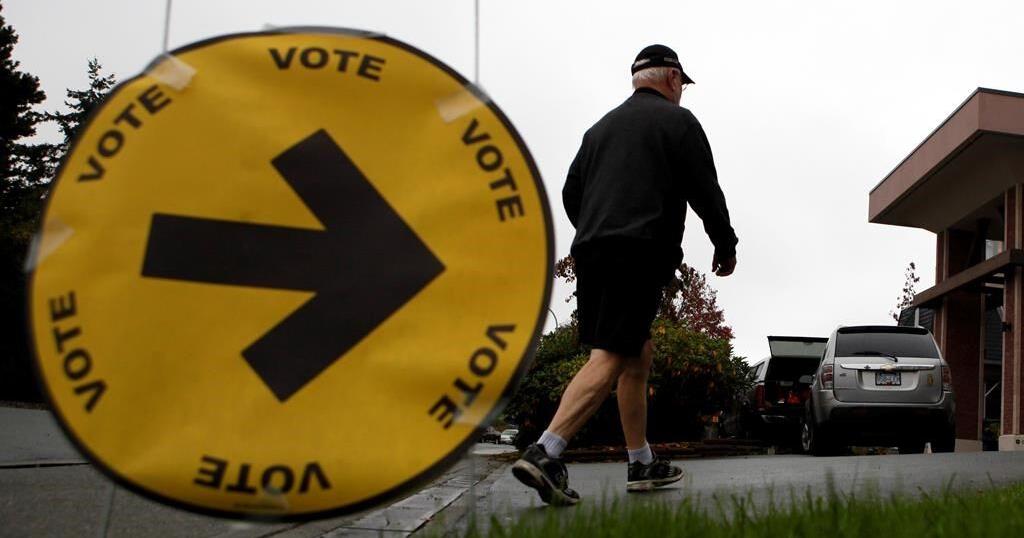
British Columbians are voting in the next provincial election on Oct. 19. The NDP is hoping to hold on to power, while those on the right are running in a new political landscape after the former Opposition BC United folded and its Leader Kevin Falcon placed his support behind the B.C. Conservatives.
Here’s a look at B.C. elections over the past three decades:
British Columbia New Democratic Party, 1996
The NDP win a majority government under Glen Clark despite Gordon Campbell’s Liberals winning the largest portion of the popular vote at 41.8 per cent. Clark became leader after former premier Mike Harcourt resigned over money from charity bingo events being siphoned into the party.
British Columbia Liberal Party, 2001
The NDP and then premier Ujjal Dosanjh suffer a resounding defeat at the hands of the British Columbia Liberal party and are only able to hold on to two seats in the legislature. Former premier Glen Clark had resigned in 1999 after he was accused of receiving free renovations from a neighbour who had an application for a casino licence before the government.
British Columbia Liberal Party, 2005
Gordon Campbell’s Liberal party maintains its majority government status though the party drops from 77 seats to 46. The NDP — which came into the election without party status in the legislature with only two seats — grew its support to 33 seats under leader Carole James.
British Columbia Liberal Party, 2009
The Liberals form a majority government again, under Premier Gordon Campbell. He would resign before the next election over his government’s decision to adopt an unpopular Harmonized Sales Tax.
British Columbia Liberal Party, 2013
The Liberals win a fourth straight majority, this time under Christy Clark. She was defeated in her Vancouver Grey-Point riding by lawyer and NDP political rookie David Eby but later won a seat in the legislature in a byelection in the Westside-Kelowna riding. The BC Greens earned their first seat in the legislature, with Andrew Weaver winning in Oak Bay-Gordon Head.
British Columbia New Democratic Party in coalition with Green Party of British Columbia, 2017
The Liberals win a small minority following the 2017 election, but leader Christy Clark loses a confidence vote and resigned. The NDP’s John Horgan became the next premier, after signing a confidence and supply agreement with the support of the three Green members of the legislature. The two parties had a total off 44 seats, the minimum required for a majority.
British Columbia New Democratic Party, 2020
John Horgan calls a snap election one year ahead of the province’s fixed election date and in the midst of the COVID-19 pandemic. Horgan tells reporters he’s calling the election early because the province can’t afford “partisan hectoring and uncertainty about whether bills will pass or not.” The New Democrats win a majority.
This report by The Canadian Press was first published Sept. 20, 2024.
The Canadian Press. All rights reserved.
Politics
Anita Anand sworn in as transport minister after Pablo Rodriguez resigns
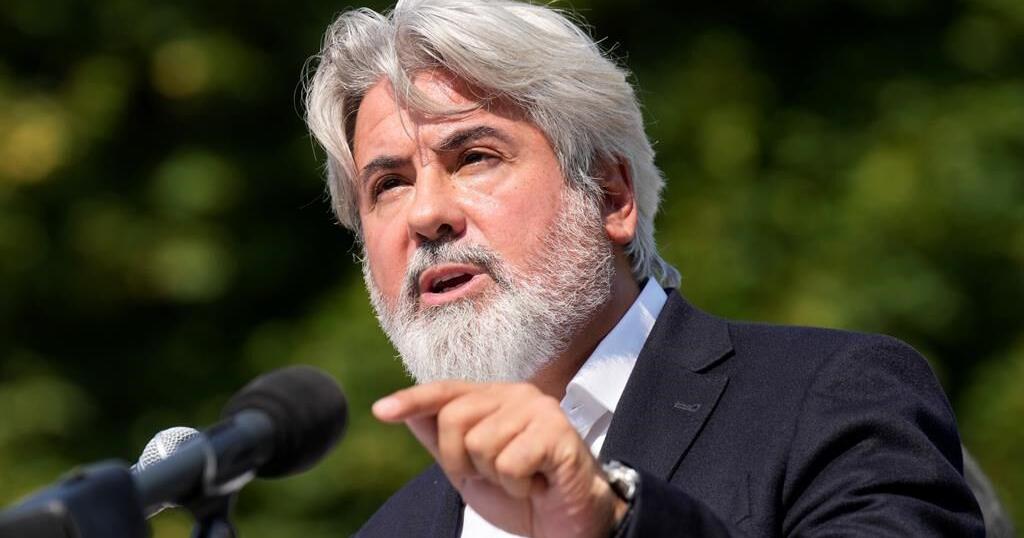
OTTAWA – Treasury Board President Anita Anand has been sworn in as federal transport minister at a ceremony at Rideau Hall, taking over a portfolio left vacant after Pablo Rodriguez resigned from cabinet and the Liberal caucus on Thursday.
Anand thanked Rodriguez for his contributions to the government and the country, saying she’s grateful for his guidance and friendship.
She sidestepped a question about the message it sends to have him leave the federal Liberal fold.
“That is a decision that he made independently, and I wish him well,” she said.
Prime Minister Justin Trudeau was not present for the swearing-in ceremony, nor were any other members of the Liberal government.
The shakeup in cabinet comes just days after the Liberals lost a key seat in a Montreal byelection to the Bloc Québécois and amid renewed calls for Prime Minister Justin Trudeau to step down and make way for a new leader.
Anand said she is not actively seeking leadership of the party, saying she is focused on her roles as minister and as MP.
“My view is that we are a team, and we are a team that has to keep delivering for our country,” she said.
The minority Liberal government is in a more challenging position in the House of Commons after the NDP ended a supply-and-confidence deal that provided parliamentary stability for more than two years.
Non-confidence votes are guaranteed to come from the Opposition Conservatives, who are eager to bring the government down.
On Thursday morning, Rodriguez made a symbolic walk over the Alexandra Bridge from Parliament Hill to Gatineau, Que., where he formally announced his plans to run for the Quebec Liberal party leadership.
He said he will now sit as an Independent member of Parliament, which will allow him to focus on his own priorities.
“I was defending the priorities of the government, and I did it in a very loyal way,” he said.
“It’s normal and it’s what I had to do. But now it’s more about my vision, the vision of the team that I’m building.”
Rodriguez said he will stay on as an MP until the Quebec Liberal leadership campaign officially launches in January.
He said that will “avoid a costly byelection a few weeks, or months, before a general election.”
The next federal election must be held by October 2025.
Conservative Leader Pierre Poilievre said he will try to topple the government sooner than that, beginning with a non-confidence motion that is set to be debated Sept. 24 and voted on Sept. 25.
Poilievre has called on the NDP and the Bloc Québécois to support him, but both Jagmeet Singh and Yves-François Blanchet have said they will not support the Conservatives.
Rodriguez said he doesn’t want a federal election right away and will vote against the non-confidence motion.
As for how he would vote on other matters before the House of Commons, “it would depend on the votes.”
Public Services and Procurement Minister Jean-Yves Duclos will become the government’s new Quebec lieutenant, a non-cabinet role Rodriguez held since 2019.
This report by The Canadian Press was first published Sept. 19, 2024.
— With files from Nojoud Al Mallees and Dylan Robertson
The Canadian Press. All rights reserved.
-

 Sports24 hours ago
Sports24 hours agoArch Manning to get first start for No. 1 Texas as Ewers continues recovery from abdomen strain
-

 Politics23 hours ago
Politics23 hours agoNew Brunswick election candidate profile: Green Party Leader David Coon
-

 Politics23 hours ago
Politics23 hours agoNew Brunswick election profile: Progressive Conservative Leader Blaine Higgs
-

 Sports24 hours ago
Sports24 hours agoFormer Canada captain Atiba Hutchinson tells his story in ‘The Beautiful Dream”
-

 Sports22 hours ago
Sports22 hours agoRed Wings sign Moritz Seider to 7-year deal worth nearly $60M
-

 Health21 hours ago
Health21 hours agoHealth Canada approves updated Novavax COVID-19 vaccine
-

 Sports23 hours ago
Sports23 hours agoOlympic medallist Alysha Newman aims for new heights after career-best season
-

 Sports23 hours ago
Sports23 hours agoVancouver Canucks star goalie Thatcher Demko working through rare muscle injury







